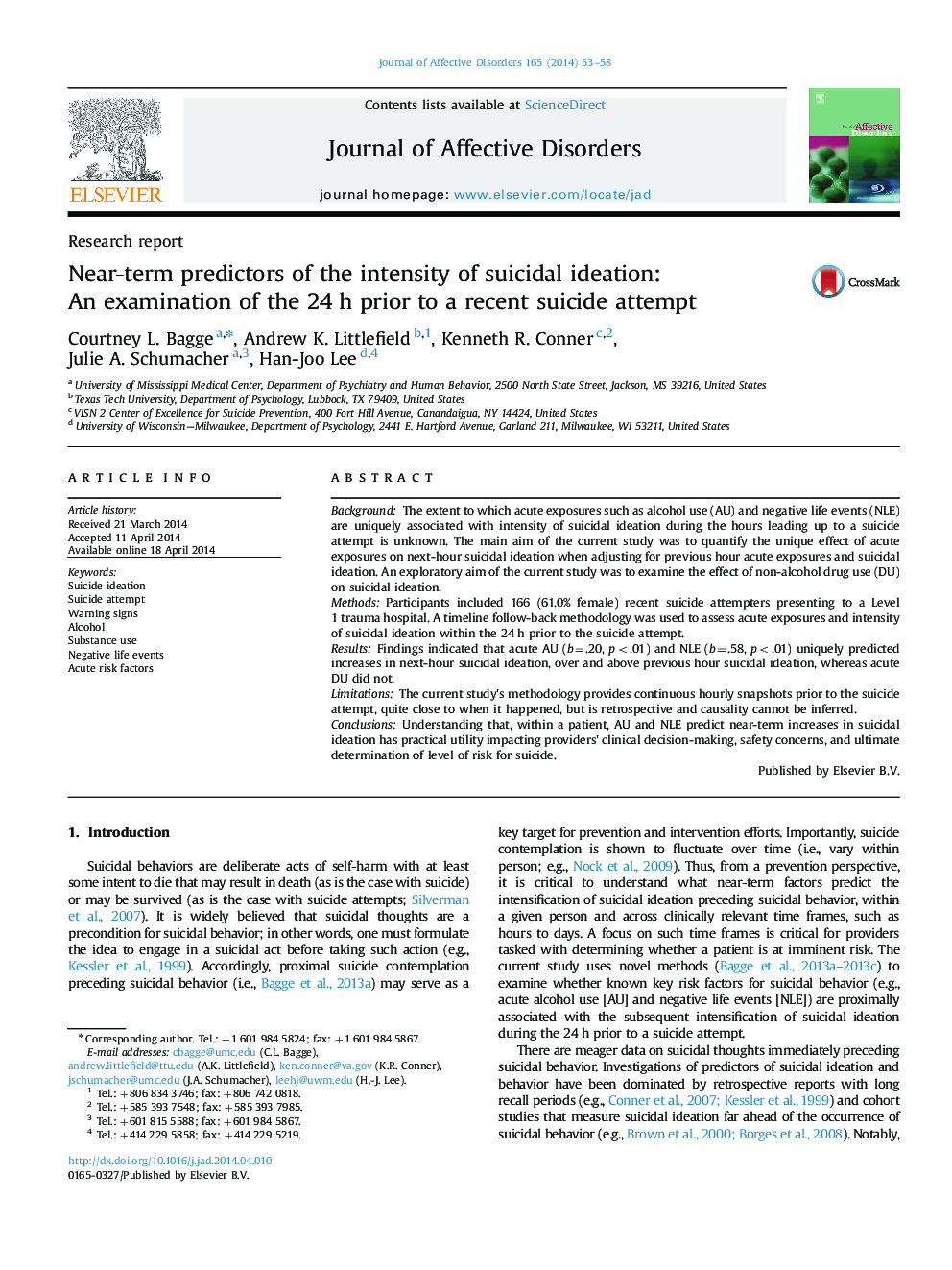| Article ID | Journal | Published Year | Pages | File Type |
|---|---|---|---|---|
| 4185991 | Journal of Affective Disorders | 2014 | 6 Pages |
BackgroundThe extent to which acute exposures such as alcohol use (AU) and negative life events (NLE) are uniquely associated with intensity of suicidal ideation during the hours leading up to a suicide attempt is unknown. The main aim of the current study was to quantify the unique effect of acute exposures on next-hour suicidal ideation when adjusting for previous hour acute exposures and suicidal ideation. An exploratory aim of the current study was to examine the effect of non-alcohol drug use (DU) on suicidal ideation.MethodsParticipants included 166 (61.0% female) recent suicide attempters presenting to a Level 1 trauma hospital. A timeline follow-back methodology was used to assess acute exposures and intensity of suicidal ideation within the 24 h prior to the suicide attempt.ResultsFindings indicated that acute AU (b=.20, p<.01) and NLE (b=.58, p<.01) uniquely predicted increases in next-hour suicidal ideation, over and above previous hour suicidal ideation, whereas acute DU did not.LimitationsThe current study׳s methodology provides continuous hourly snapshots prior to the suicide attempt, quite close to when it happened, but is retrospective and causality cannot be inferred.ConclusionsUnderstanding that, within a patient, AU and NLE predict near-term increases in suicidal ideation has practical utility impacting providers׳ clinical decision-making, safety concerns, and ultimate determination of level of risk for suicide.
